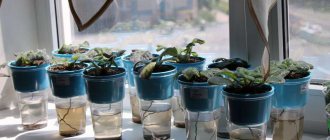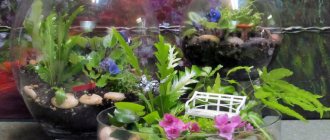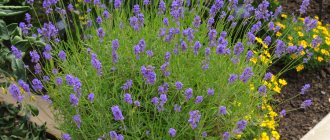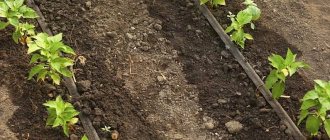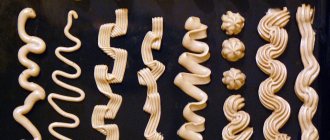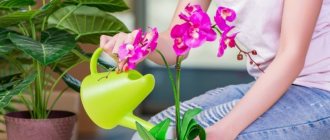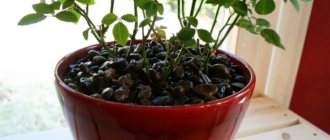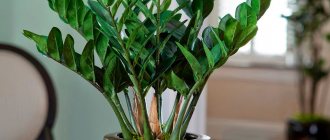Ways to water flowers while on vacation.
Many women are engaged in plant breeding and cannot imagine their life without indoor flowers. Indeed, indoor plants help make the air in the room more humid and also saturate it with oxygen. In addition, some house flowers improve mood and release huge amounts of phytoncides into the air, which treat asthma and respiratory diseases. In this article we will tell you what to do to keep your flowers alive when you go on holiday.
How to leave flowers at home while on vacation?
There are many ways that allow you to moisten the soil without attracting neighbors.
General rules:
- If you do not have the opportunity to ask your acquaintances or friends to water the flowers, you can solve the problem yourself. One of the simplest options is to water the plants generously before leaving, make the room dark, close the curtains, and remove the flowers from the windowsill to the floor. To keep it as dark as possible.
- After this, it is advisable to build a kind of mini-greenhouses that will retain moisture inside. Please note that before leaving, it is advisable to completely cut off the buds of flowering plants, as well as a few leaves. This will help the plants survive.
- Of course, this will significantly deteriorate their appearance, but after arrival you can quickly restore the plants using mineral fertilizers. Such procedures will help plants survive. After removing some leaves and also removing the buds, you need to pour a little water into the bottom of the container and immerse the flower pots in them.
- It is necessary to deepen approximately 1/3. Covering some plants with plastic bottles can also be helpful. In this case, it is advisable to make several holes in the lower part so that air can flow to the flower and soil, and it will not bloom. This mini-greenhouse retains moisture and will extend the life of your plant.
Watering with a flask
Preparing plants for holidays
There are two weeks left before departure. Completely stop feeding plants with various additives. This will help your indoor flowers slow down their rapid growth, and, therefore, reduce their appetite and need for your presence.
There are 7-10 days left before departure. Remove all affected and diseased leaves, shoots, and buds. If necessary, treat sick plants with medicinal preparations, and healthy ones for prevention with herbal infusions.
There are three days left before departure. Trim buds and flowers without regret. You still won’t be able to admire them, but this will significantly save the plant energy and resources.
- Yucca
On the eve of the trip. Water and wash each plant, place all flowerpots on the floor, away from the scorching sun. In this case, the “more fun together” rule applies: place the pots as close to each other as possible to maintain air humidity longer. You can build a polyethylene cap on top, but be careful: plants with succulent leaves can rot and become moldy.
How to water flowers during a long absence: preserving moisture-loving plants
In addition, you can build another option for moistening the soil.
Instructions:
- To do this, you need to take a large container, fill it with expanded clay and moisten it. Immerse flower pots in water with expanded clay. Through the holes at the bottom, the roots of the plants will draw water towards themselves, thereby moistening the soil. You can build a drip irrigation system.
- One of the simplest options is to fill a basin with expanded clay and place flowerpots with flowers in it. Fill the rest of the space with newspapers, torn into pieces. Next, you need to turn on the tap so that the water flows drop by drop.
- The drops will moisten the newspaper, and the plant, in turn, will draw moisture from them.
Please note that the method of immersing flowerpots in water is only suitable for those plants that love moisture. Such as ferns and all types of moss. This method is not suitable for other plants, because their root system will rot if there is too much water in the pot.
Watering flowers on vacation
Which flowers tolerate drought more easily?
Various factors influence the survival of indoor pets without humidification.
Flowers in a home collection can vary greatly in origin, appearance and development characteristics. Most indoor plants can be safely left for a week without watering, after being well moistened. A longer period of lack of irrigation can negatively affect the health of indoor pets.
In winter, herbaceous plants are watered on average once a week, and during periods of active growth or flowering - once every 3-4 days. The irrigation regime for orchids is approximately the same. Agave, hoya, sansevieria, yucca and aspidistra are not so demanding on watering - they are content with moisturizing once every two weeks. Popular asparagus and chlorophytum tolerate drought well at low temperatures due to the presence of water reserves in the bulbs. Cacti and succulents are left without watering for a month if they are in a dormant period and the ambient temperature is from 5 to 10 degrees Celsius. For many representatives of this species, this content is the norm.
“Water-bearing plants” can hardly tolerate prolonged absence of watering. These include, for example, azalea, streptocarpus, primrose, calathea, cyclamen and episcia. It is better to hand them over to someone else for care during a long absence. If you travel from home often and for a long time, you should choose less moisture-loving plants for growing. Flowers with hard leaves and a thick trunk will easily tolerate a waterless period of up to 2 weeks.
- Air temperature and humidity.
In a warmer room with low humidity, indoor pets will begin to suffer from lack of moisture much earlier. If a long trip takes place in winter, it is appropriate to reduce the temperature of the central heating radiators. Additional containers of water in the room will help increase the humidity.
Do-it-yourself waterer for flowers during vacation from a plastic bottle
You can greatly simplify your task and purchase a drip irrigation system. But it costs a lot of money. If you are not ready to fork out for the purchase, you can make something similar yourself.
Instructions:
- To do this, you need to take a plastic bottle, fill it with water, and screw on the lid.
- Use a thin awl to make a hole. Please note that water should not flow out of the hole, but drip from it little by little.
- Sink this lid 3 cm into the soil and leave. Plants will draw up as much water as their root system needs
Watering bottle from a plastic bottle
Hydrogel
Hydrogel is a polymer that can absorb a large amount of moisture (2 g can absorb 200-500 ml), then slowly release it to the plants. Buy colored balls when going on vacation and soak them for 8 hours. After this, put the balls in a pot, cover with moss or a layer of earth.
Many flower growers, who are often away from home, already plant them in the ground when planting flowers. Before leaving, all that remains is to water the plants and you can enjoy your vacation.
Modern manufacturers produce hydrogel with complex fertilizers. They last for 3-4 years.
How to water flowers during a long absence: drainage watering method
You can also cope with moisture using so-called drainage irrigation.
Instructions:
- To do this, you need to take a fabric that absorbs water well. Place a bucket of water on a stool, wet the strips of this fabric, position the ends so that one of them is immersed in the bucket and the other touches the soil.
- You can even bury this strip a few centimeters into the ground. This way the plants will draw as much water as they need. Please note that such a structure cannot be placed in direct sunlight, because the strips of water may dry out. Then watering will not be carried out, and the plants will simply dry out.
- Instead of cloth, you can use regular bandages. Please note that for large pots of flowers it is better to use not one wick, but several. For about a 20 liter pot you will need 4 wicks so that the plants do not dry out during the hottest part of the day.
- You can place pieces of fabric in a plastic pipe, this will protect them from drying out. Another way to reduce moisture evaporation is to use moss or sawdust. You need to take the mulch, moisten it and place it on top of the soil in the pot. Moss can be used for the same purpose. These substances retain moisture inside the pot and prevent evaporation.
Drainage irrigation
We save water
• Build a greenhouse.
Cover the plant pot with a bag to create a greenhouse effect. But be careful not to let the film touch the leaves and do not make the “greenhouse” airtight. To do this, you can stick several wooden skewers around the perimeter of the pot, which will hold the bag. It is also important to make sure that high humidity is not contraindicated for your plants.
• Place water-saturated absorbents into the soil.
You can take a special “hydrogel” for plants, or you can, as advised on gardening forums, use the inside of a baby diaper. Polymers can, increasing significantly, absorb a much larger volume of water than ordinary soil. They will gradually release this water to the soil and roots of the plant.
• Minimize evaporation from the soil surface.
Covering the soil with wood shavings or placing damp, crumpled newspapers in the pot will help keep the moisture from evaporating too quickly.
How to preserve flowers during the holidays: alternative methods
Another excellent way and the most fashionable is the use of hydrogel. This is a fairly fashionable method; balls can be purchased at any flower shop. The hydrogel is soaked in water for several hours. After it swells, after about eight hours, it is placed on top of the pot. Thus, the hydrogel will gradually release water into the soil, moistening it. This method is suitable if you need to go on vacation for about a week. Please note that when drying, hydrogel beads can release substances that are harmful and toxic to the body.
You can also use some knowledge in electronics. This method is suitable if you know a little about electricity. You can make a waterer yourself. To do this you will need a large saucepan with a hole drilled in the bottom. A tube is welded onto it, to which a magnetic valve is connected. Several tubes extend from it, each to its own pot, and a time sensor is installed. After a certain time, the magnetic lock will operate and release water for several minutes. This type of watering is absolutely enough to moisturize the plants and not last for up to 3 months.
Watering flowers
For people who don't spare money and who are often absent, moving and on business trips, so-called smart pots are ideal. This is a kind of system that resembles a pot in a pot. This way there is water inside the smart pots. Above it is a container with expanded clay and soil. The flower simply draws water as the soil dries. Such pots are not cheap, so not everyone can afford them. Accordingly, many people who do not have the opportunity to purchase such a system choose more affordable options that can be made with their own hands.
Watering flowers
Homemade automatic watering
Before you choose your answer to the question: how to water flowers while on vacation, you should first familiarize yourself with the various methods of remotely caring for a plant. The automatic method of watering flowers is one of the most effective; moreover, it is quite easy to organize; it does not involve serious material costs.
Flowers tolerate this type of nutrition well for more than three weeks. The essence of the method is to ensure a constant supply of life-giving moisture in the required quantity to the roots of plants. To make such a system, we need an ordinary plastic bottle; its volume must be selected based on how much earth will need to be moved.
We divide the bottle into two equal parts, cut the top half with the cap to the size required for our volume of land (with a small margin). We make a small hole in the bottle cap and place a tourniquet or rope made of any cotton fabric into it (it is important that it absorbs moisture well). We screw the cork back into the upper part, and position the rope in such a way that something like a circle or spiral is formed.
This will help ensure maximum contact with water. After this, pour water into the lower part of the bottle and place the upper part into it. To prevent water from evaporating, it is worth gluing the seam between the parts with electrical tape or tape. The work is done, all that remains is to transplant the flower into this temporary pot and you will no longer have to worry about how to water the flowers during your vacation.
The second method of watering is to use ordinary droppers, as well as a water container. We need to purchase as many drippers as the number of plants that need watering. To begin with, we prepare the device: we remove the needles and check the integrity of the surfaces, then we fasten them together, and also weigh them down with some tips so that they are completely immersed in a reservoir of water. We collect a container of water (the volume depends on the duration of automatic watering), and place the ends of the droppers in it.
Then we place the entire structure on some elevated surface (for example, a stool). Let the moisture flow through the tubes by opening the regulators. We turn off the flow of water and place the other end of the dropper in the ground. Re-opening the regulator completes the job. This method is effective, but before watering flowers during vacation in this way, it is advisable to try it a little earlier than the planned trip: this way we will be sure of how much liquid the plant needs and what flow rate is most comfortable.
How to water indoor flowers during the holidays: do-it-yourself drip watering
Automatic watering of plants using a dripper is one of the unusual and interesting options. Suitable if you have several old containers from various IV solutions, such as saline. If you don't have them, you can use a regular plastic bottle.
Instructions:
- Take a tripod and hang several bottles on it. Now take a regular dropper system, one needle, stick it into a plastic bottle. Place the second part of the tube, removing the needle, directly into the pot.
- Before doing this, it is worth setting up the regulation of liquid ingress. The drip system is very convenient because you can speed up or slow down the flow of water into the pot. This is ideal if you are leaving for up to two weeks.
- Thus, there is no need to solder, tinker, or purchase anything from an electronics store. Because the drip system does everything on its own.
Plant dripper
This colorful world is yours today
How to preserve flowers while on vacation
Do you love indoor plants? But sometimes you have to go somewhere, for example, on vacation. How to preserve flowers during your absence? After all, you can’t leave them to the mercy of fate. Why not go anywhere because of flowers? This is what we will talk about.
Even if you are not going on vacation, you may always need to go, for example, to visit relatives or on a business trip. And what if everything “grown by back-breaking labor” goes to waste? Oh no! . If there are no relatives or neighbors to whom you can entrust watering the plants, describing how, when and how much to water, then it doesn’t matter. Vacation and flowers are compatible things. There are various options for preserving flowers during your absence.
The period of your departure is up to 7 days, unless the weather is very hot, the majority of indoor plants can survive without any special equipment, here we are not talking, of course, about very delicate and moisture-loving plants. And if these are cacti and aloe, then they will easily tolerate a two-week lack of watering.
If you are away for a week and the weather is hot, you can cover the pot along with the surface of the earth in a plastic bag or put wet moss, felt cloth, or even just a piece of oilcloth on the surface of the earth, after watering the plants well. During your absence, it is better to remove plants from the windows, especially if they are south-facing windows.
For large flowers, you can organize drip watering from a small hole in the cork of a plastic bottle made with a thick needle. The bottle is placed vertically, with the cork down on the surface of the earth, you can deepen it a little. You also need to make a hole in the top of the inverted bottle (what used to be its bottom). To maintain the position of the bottle and give it stability, it must be tied to some support. How quickly water will flow out of the bottom hole depends on the size of the hole. This is determined practically in advance.
If you will not be at home for 10-12 days, then the most common way to water the plants will be to water them from a container with water flowing through strings.
Container with water
We remove the plants from the window; you can arrange them on the floor in a circle. In the middle of the circle we place a container of water, which should be located slightly above the surface of the ground in flower pots.
Watering plants while on vacation
We take a rope or a narrow strip of fabric, one end of which we place in the water, the other on the surface of the plant’s soil. We carry out this procedure with all plants placed around a container of water. Watering of plants is carried out using a wet rope.
Vacation and flowers
As long as there is water in the container, the soil in the pots will be moist, so the container with water should not be too small. The windows should not be left open. And it will be better if you limit the space in which you leave flowers by closing the doors to the room. Plants should not be placed in the bathroom; they still need light.
Plant under a jar
Small plants can be placed under a glass jar. And you don't have to worry about them. The same jar can be used to cover low plants up to the surface of the ground so that there are no gaps between the edge of the jar and the surface of the ground.
Store plants under a plastic jar
Wide plastic jars are available for sale; they can also be used to cover larger plants. Or you can use drinking water bottles. We cut off the top at the level of the tapering neck and cover the plants.
If you are leaving home for 2-3 weeks and there are a lot of plants, then you need to pack them more securely. It is worth stocking up on large-sized plastic film in advance. It is usually sold as a “stocking” 1.5 m wide. For one package you will need 1-1.5 linear meters, depending on the height of indoor flowers.
How to save plants
Small plants can be packed in separate bags. If you put the bag on top, then tie it tightly with a rope at the bottom; rubber bands or tape are also suitable. If you place a plant in a bag, then the top of the bag must be hermetically sealed. Here it’s easier to use paper clips, a stapler, rubber bands, or just tie it with a string.
If there are a lot of plants, then we arrange them close to each other, taking into account that each of them should receive a little light; we put the taller and less light-loving ones in the background. The two or three tallest plants can be placed on the sides, they will hold the top of the film, for me these are usually large ficuses.
When the main part of the plants is assembled, carefully put on the film stocking, straighten the film, lifting it up and secure it with clothespins around the large plants on top.
Flowers during vacation
We also connect the ends of the film at the top with clothespins or paper clips, forming a sealed space under the film where the flowers will live during your absence. It is better to place such a greenhouse away from the window, but it is also possible to place it on a window.
If you placed flowers on a window, then leave a small gap at the top of the film; when the sun is shining, the excess heat will rise up a little.
Flowers under film
Before wrapping indoor plants in plastic, they should be well watered. Under the film you need to place one or two containers with water the size of a glass, then even if it is very hot inside, the humidity will help the flowers survive.
If you grow flowers on special racks, then the principle is the same, you just need much more film. The entire rack is covered with film up to the floor and containers with water are placed inside.
From practice. Geraniums do not like moisture and they need light, as a last resort, place them separately from other flowers, on the north side and do not place a container with water inside, then maybe they will be preserved better.
After keeping it under the film for a long time, do not remove it abruptly, first open the top a little, and after the heat and moisture have come out, remove the film completely. Some flowers may develop aerial roots, which can then be cut off. Some flowers may shed their leaves; pachistachis and pomegranate will definitely do this. Some of the plants will not be happy with the excess moisture, some will wither, but they will survive. Ficuses, lemons, dieffenbachias, violets, syngoniums, begonias, ferns, eucharis, and crassula tolerate such living quite tolerably.
Currently, there are special, industrially produced drip irrigation devices, which you can find out about in flower shops.
I think that my article will help you preserve your flowers.
The website https://cvetnoimirsv.ru has a lot of useful and interesting information, save this link for yourself.
Did you like the article? Tell your friends:
Chat with me:
How to water flowers while going on vacation using capillary mats?
You can also cope with the lack of water using capillary mats.
Instructions:
- This system is sold in gardening stores and consists of a mat that is covered with a protective film on top. In this case, it is necessary to build a special system. Pour water into the bottom tray, place a tray with holes on top, on which the capillary mat is laid out.
- Flowerpots with plants are placed directly on it. The capillary mat is constantly saturated with water, taking it from the pan, which is located below.
- Plants, in turn, absorb as much water as they need. The mat is quite cheap, so many people can equip such a system. Similar irrigation systems are used in greenhouses for growing seedlings and flowers.
Watering with capillary mats
In fact, there are a huge number of means for watering flowers in your absence. Now in gardening stores you can find special conical flasks that work on the principle of a plastic bottle. They have a droplet form into which water is collected. A thin spout is inserted into the soil and water gradually flows from this tube into the soil. Plants independently draw as much water as they need.
